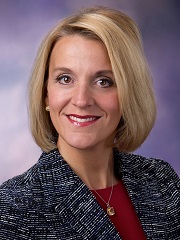Special Report: Effective use of analytics can help healthcare organizations solve critical challenges
The Business Intelligence, Data Management and Analytics cohort at HFMA’s 2019 Annual Conference yielded these 10 top takeaways.
- In an era when electronic health records are a source of consternation for many in healthcare, analytics can be a primary tool for enhancing the user experience.
- Advances in artificial intelligence are bolstering clinical documentation, allowing for better diagnosis specificity and offering potentially vital clinical clarifications — and in real-time.
- A key to effectively using analytics is knowing how to communicate results in a way that leads to constructive changes.
With ongoing changes to business models requiring informed approaches, healthcare organizations increasingly feel a sense of urgency to craft an enterprise strategy around data. Two areas in which data analytics can have a notable impact are electronic health records (EHRs) and clinical documentation improvement (CDI). Both areas have the potential to bolster clinical, financial and operational processes. Conversely, both have been the source of headaches for users and organization leaders.
Approaches to optimizing CDI and the EHR through analytics were among the subjects discussed in depth during a cohort of three sessions at HFMA’s 2019 Annual Conference. The cohort was sponsored by Nuance.
Here are the 10 key takeaways from the cohort:
1. Communication helps stakeholders be better users of data

The analytics push is in a relatively early stage at Regional Health, Rapid City, S.D., which just implemented a new EHR within the last couple of years. “It’s a lot of just getting people to communicate, to think about being data-driven and to start with information,” said Stephanie Lahr, MD, chief information officer and chief medical information officer at Regional Health. If clinical leaders have questions about a drop-off in revenue, for example, those individuals should expect to find answers for themselves. The challenge is making those stakeholders understand that “this is a great opportunity to look at the data that we’ve given you. You know your business best, and we’re all here to support you,” Lahr said.
2. Analytics is crucial to optimizing EHR use
“Optimization is really a two-pronged effort,” said Chris Holland, user experience manager for the Partners HealthCare system, Boston. “It’s how do you optimize the system design, and how do you optimize how users use the system?” Available data tools provide insight into the latter question. “It’s been incredibly helpful to figure out who’s staying up until 3 in the morning, who’s stuck in the inbox, who’s ordering, who’s not ordering,” said Stephen Morgan, MD, senior vice president and chief medical information officer with Carilion Clinic, Roanoke, Va.
3. Conversations about EHR optimization are changing
As clinical and financial operations become more integrated, all stakeholders are starting to think more holistically about aspects such as EHR workflows. “It’s definitely a bi-directional learning opportunity both from revenue cycle and the frontline staff,” Holland said. “You see some problems bubble up on the revenue cycle side [for example], and that can drive a redesign on the front end. One thing that’s nice is with the transparency of data that we’re seeing, these conversations are taking place a lot more naturally and in a more evolved state than they probably ever have.”
4. Analytics can set the stage for incorporating cost information in the EHR
The transition to value-based payment models makes clinicians more open to understanding how they are performing not only on quality but on cost. The EHR can be a primary mechanism for relaying that information. “We put in dollar signs to indicate an expensive test,” Morgan said. “In the next year, we will start to integrate more cost information so that clinicians, particularly for imaging and labs, have a better idea. We’re working on doing the same thing, which is a moving target, for drug costs — just trying to figure out how to put that data in.”
5. Artificial intelligence (AI) can make documentation less burdensome
Physicians end up doing a lot of documentation work retrospectively, with consults by clinical documentation specialists typically happening 24 hours or more after a patient visit. A better approach is available thanks to modern technology. “What if we could, while the physician is documenting, offer them immediate opportunities to improve what they’re doing while the patient and the context of the patient are fresh in their minds — while they’re actually doing it,” said Anthony Oliva, DO, vice president and chief medical officer, Nuance. “For a lot of physicians, that would be a game-changer.”
6. AI boosts the specificity and accuracy of diagnoses
Computer-assisted physician documentation (CAPD) enhances diagnosis specificity through real-time guidance, allowing the encounter to be properly coded. “There are only certain diagnoses that you get paid for,” Oliva said. “So, if it’s not specific enough, wouldn’t it be nice to let the physician know that right then and there?” AI-powered CAPD also analyzes encounter notes and can present clinical clarifications, improving the accuracy of the documented diagnosis and severity.
7. CDI is clinical-based rather than coding-based for some organizations
For Halifax Health, a community hospital system based in Daytona Beach, Fla., a key to improving documentation was the shift to a clinical-based template. “We’re no longer talking in code,” said Tom Stafford (pictured at right), vice president and chief information officer. “Instead, we’re focused on the clinical nature of improving the record. Coding happens after the fact. By doing clinical-based documentation improvement, we’re doing it either when the physician’s talking into his mic or very soon after.”
8. Analytics tools are key to gauging the success of a CDI program
Although an improved case mix index may indicate that a CDI program is working, that metric is not sufficient as an evaluation tool because it fluctuates, Oliva said. Examining a range of clinical, financial and operational indicators is vital. Oliva cited four, in addition to case mix index:
- Physician engagement and response rate
- Retrospective coding queries to physicians
- Expected mortality
- Case coverage (through enhanced clinical documentation specialist productivity and efficiency)
“You really need to get these things on a monthly basis,” Oliva said. “Even more important, can you get down to the individual physicians? You’ve got five orthopedic surgeons, for example, and only one of them isn’t answering the clarifications. Well, you’re not going to bother with the other four. But you have to know that.”
9. Organizations must overcome various barriers to effectively use analytics
In an interactive workshop to conclude the cohort, audience members shared various obstacles that their organizations have faced in utilizing analytics. One is inconsistency of sourcing and methodology, which can limit the ability to aggregate information. Also, lack of transparency may cause dissension. “For every data set we’ve shown on a board, you’ve got somebody in that room who challenges that number and how believable that number is,” an audience member said. “It’s very important to address that barrier up front.” In addition, lack of communication between the business team and the IT team can create a gap between the goal of an analytics project and the implementation.
10. Results of an analytics program should be communicated the right way
When using analytics to affect physician behavior, such as in the context of CDI or cost of care, administrative leaders should remember their audience. “Here’s one thing I know about physicians: Most of them haven’t failed at anything in their entire life,” Oliva said. “So, if you walk up to a physician and say, ‘You’re performing below average compared to your peers,’ they’ll get defensive. If you stick with the product, you explain the rules on how the methods are collected, you may have a better chance. But it takes that kind of work.” Physician champions can be effective in initiating changes, but they should never be used as “the stick,” Oliva said. Instead, “let them be peer colleagues.”
***
From our sponsor: How analytics can enhance the healthcare provider experience
Michael Clark, senior vice president and general manager for provider solutions with Nuance, offers insight on some of the main points from the Business Intelligence, Data Management and Analytics cohort at HFMA’s 2019 Annual Conference.
What are the biggest challenges for healthcare providers today in trying to make effective use of analytics?
There’s one challenge that rises to the top, and it’s one that came up several times in our conversations with cohort panelists: creating a data-driven culture. As with any behavioral change, it disrupts the usual day-to-day workflow and requires a lot of reminding and reinforcing with operational leaders who lacked access to this data previously.
Stephen Morgan, MD, from Carilion Clinic summarized it best when he said 80% of the work is changing the people and culture, 15% is changing and improving process and 5% is the technology.
As panelists discussed in detail during the cohort, how can providers use data analytics to optimize electronic health record (EHR) operations?
Analytics can drive the evolution of workflow design and the operational processes around the system, including those that cost time and dollars and cause user frustration. It can also drive targeted optimization for users that need support, be it retraining or personalization, in order to get them home and at the dinner table on time.
This type of optimization can have positive downstream clinical impacts, too. As Stephanie Lahr, MD, from Regional Health shared, their organization was able to drive down hemoglobin A1C in their diabetic population by addressing workflows and standard processes to manage these patients through data that wasn’t previously available.
What are the implications of enhanced EHR use for provider satisfaction and physician burnout?
As Christopher Holland from Partners Healthcare outlined, optimizing the EHR has compounding benefits for quality, financial and safety measures — saving time, reducing burnout and ultimately creating happier providers.
From a quality standpoint, dashboards and metrics can help providers more easily identify patient needs across the continuum. Financially, it opens provider capacity to see patients and provides the CFO with operational data to demonstrate technology ROI. And most importantly, it’s combating physician fatigue and improving patient safety by giving providers the tools to finish their work during clinic hours.
How can data analytics and AI improve clinical documentation?
Data and analytics solutions are particularly effective at analyzing multiple streams of siloed data — coming from EHRs, medical devices and remote-patient monitoring systems — to identify health patterns in patient populations where opportunities for personalized interventions didn’t exist before, which enhances not only the quality of care that the patient receives but also the quality and integrity of data itself.
It can also call attention to administrative errors from incomplete or inaccurate documentation before the documentation is submitted, ensuring appropriate and timely reimbursement.
***
The Business Intelligence, Data Management and Analytics cohort at HFMA’s 2019 Annual Conference included the following sessions and speakers:
Using Analytics to Optimize the EHR (panel discussion)
- Christopher Holland, HCMBA, user experience manager, clinical strategy and innovation, Partners HealthCare, Boston
- Stephanie Lahr, MD, CHCIO, chief information officer and chief medical information officer, Regional Health, Rapid City, S.D.
- Stephen Morgan, MD, senior vice president and chief medical information officer, health analytics and clinical informatics, Carilion Clinic, Roanoke, Va.
- Michael Clark, senior vice president and general manager, Nuance Communications, Inc.
Using AI-Powered Documentation to Prioritize Patient Encounters
- Tom Stafford, vice president and chief information officer, Halifax Health, Daytona Beach, Fla.
- Anthony Oliva, DO, vice president and chief medical officer, Nuance Communications, Inc.
Using Analytics to Improve Documentation Performance (interactive workshop)
- Anthony Oliva, DO, vice president and chief medical officer, Nuance Communications, Inc.





